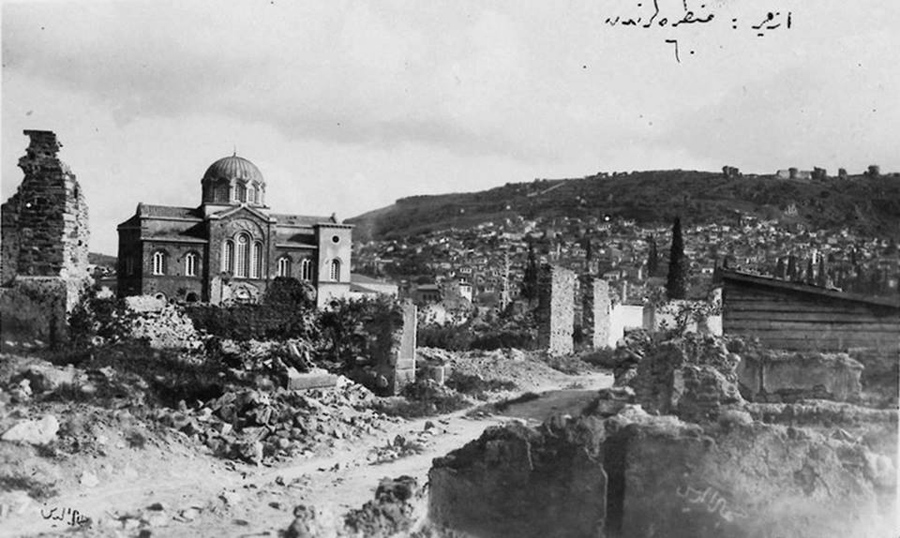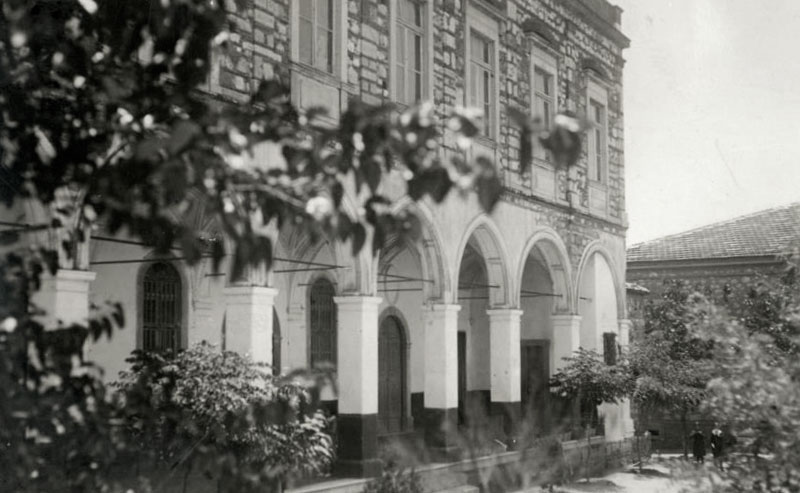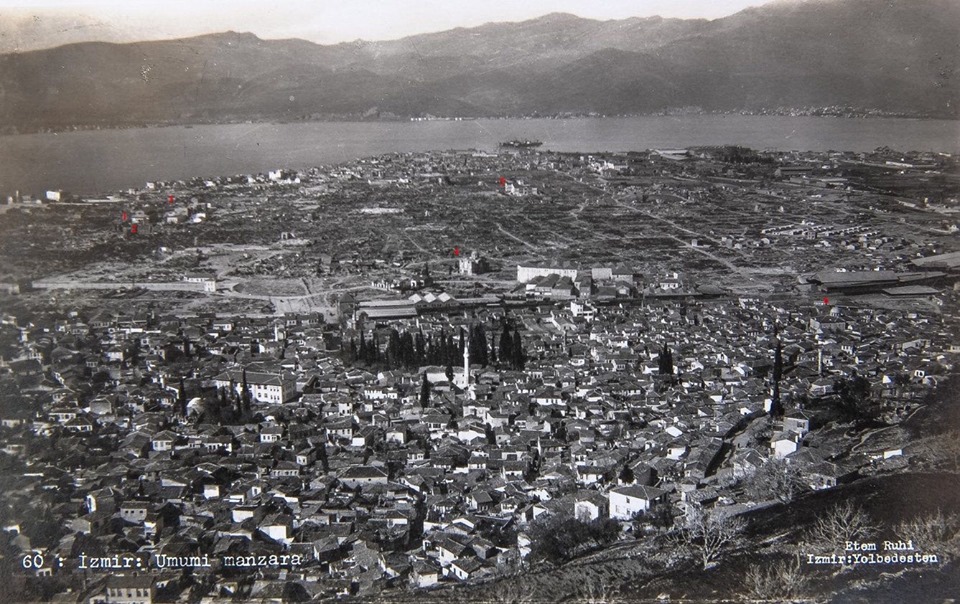
The Interviewees


Interview with Ümit Eser & Ayça Baydar & Barbaros Uçar, June 2020
On the occasion of the recent publication of the book in Turkish: ‘Hasretin Otuz Yılı: Olga Vatidou’nun İzmir Ziyareti’ [30 years of longing: Olga Vatidou’s Izmir return visit]
1- When did you first come across the self-published book of Olga Vatidou and how unique is this record? Do you know of any other autobiographical account of a Greek refugee from Izmir returning years later to the city and recording their impressions and feelings?
Ayça Baydar: We came across her book in 2012 during our fieldwork in Athens. Vatidou’s work is not the first or the only autobiographical account of an Ottoman Greek refugee. There are many others like Nobel-winning Yorgos Seferis’ record and Nikos Kararas’ interviews with the refugees who could later visit their hometowns. However, Olga Vatidou’s autobiography is unique in the sense that she was the only woman that we know who visited Izmir years later and published her account.
2- When Olga Vatidou had to leave Smyrna / Izmir she was 17 so only just approaching adult-hood. From her writings do we get a good impression on her grasp of, or lack of, the complex political and military developments and consequences that led to that catastrophe to the Greek community of Anatolia? Did her writing also reveal a sense of bitterness 30 years later still lingering for this loss?
Ümit Eser: Her account reveals a strong sense of bitterness indeed. We can clearly see from her writings how deeply she still felt attached to her hometown even after 30 years. After so many years she found it hard to leave their churches, houses, and schools behind. However, her book does not reflect on political developments leading the Greco-Turkish War of 1919-1922 and the subsequent population exchange; she rather shares her personal experiences without giving much information about the causes of the catastrophe.
3- When Olga Vatidou visited Izmir in 1952 presumably the city still hadn’t gone into a building boom, so the landmarks outside the fire-zone must have been mostly intact, however of course now a totally Turkish city. Do we know from the text if Olga was able to converse with the locals at all?
Ayça Baydar: This is a very good point; in fact the value of her book is to remind us the architectural shift after the deportation of the Ottoman Greeks from Izmir. The city lost its architectural and socio-economic character as well as losing its people. Her detailed descriptions help us to visualise how Izmir once looked like, how cosmopolite it used to be, and how potent were its non-Muslim communities, in particular the Ottoman Greeks. We guess that she does not prefer to converse with the locals as this would have affected the romantic tone of voice in her writings.
4- Were you able to trace Olga’s family and her possible descendants or was this not part of the project?
Ümit Eser: No, we did not intend to this. Nonetheless, she gives clues about her family, particularly her father. We do not know much about her family except that she was born into a wealthy family and was expected to follow the established journey of middle-class Ottoman Christian woman until the catastrophe in September 1922. The neighbourhood where she grew up implies this fact. Karantina was a new neighbourhood in the southwestern part of the city. But we need to underline that her family history is not part of the project as we only wanted to focus on the population exchange and bring up the issue of the longing of the Ottoman Greeks for their hometown and the sorrow of being deported in 1922-1923.
5- Do the Levantine or the Jewish community of Izmir feature at all in her writings?
Ayça Baydar: No, there is no info about other non-Muslim communities who could remain in the city, though we know that the non-Muslim communities continued to shrink in the early republican period.
Ümit Eser: Although she does not tell much about the Jews and Levantines, presence of the remaining Orthodox Greeks may be felt in her book. Vatidou narrates a scene that she and her friends, as visitors, visited Alsancak train station where they were stunned when they see an old church bell displayed for decorative purposes over the platforms. Our visitors can also notice the implicit relationship between Christians remaining in the city and this church bell.
6- Did Olga Vatidou visit Izmir on her own or with friends / family and do we know if she did return visits? Did she take any photographs?
Ayça Baydar: She visited Izmir with a group of former refugees like her. As far as we know she did not have chance to visit Izmir again. At least there is not another account or record left from her. Unfortunately, there are no pictures in her book either.
7- Were there any difficulties in the translation from Greek or areas of national sensitivity for a Turkish readership that had to be edited out?
Ümit Eser: When I glanced the text, I felt a strange sense of familiarity. My first impression was that this text has familiar words for Turkish readers who can read Greek letters. Indeed, Vatidou kept some Turkish versions of place names, such as Karataş, Karantina, İnciraltı, Göztepe, Kokaryalı, and even distant Selçuk. Besides, it was really bizarre for me to notice that she preferred using some Turkish words in the early 1950s: Avlu, sokak, kurna, kalıp, kaldırım, kırmızı etc. But I need to emphasise that Barbaros Uçar, who has played the major role in making translations, may give a detailed answer to this question.
Barbaros Uçar: It has been quite challenging at times to translate the old-fashioned expressions which are not used any more in contemporary Greek. Moreover, in some parts, the original language of the book had relatively harsh expressions of nationalist sentiment enough to provoke hostility among Turkish readers who might hold views from the counter-perspective of Greek narrative on the subjects of the conflict. However, as the book is mostly based on personal experience, emotions, and the thoughts influenced by the given events in the book, I avoided changing the tone of the language in order to be able to reflect political and social atmosphere of the time better as well as to preserve the emotional component. I hope that this will help Turkish readers gain more insights how people were affected through the eyes of Vatidou.
8- Do you think there could be mileage in this book being republished in Greek, perhaps with imagery showing the various locations she visited / described?
Ayça Baydar: This is a very good idea 😊. In this publication we tried to aim to both Greek and Turkish readers by publishing these memoirs bilingually and included some pictures of Izmir in the early 20th century that were collected from different archives.
9- Do you have a future project in the pipeline?
Ayça Baydar: We are planning to continue to work on the Greek Orthodox communities during the transition period from the Ottoman Empire to the Greek and Turkish nation-states through the people’s experiences.
Interview conducted by Craig Encer, June 2020.

The Evangelistria church which survived the 1922 fire, photographed in the early republican years which was standing till the late 1940s, within the zone now occupied by the Izmir Culture Park.

The Agios Konstantinos church which again stood in the early republican years and was in the Tepecik quarter.

